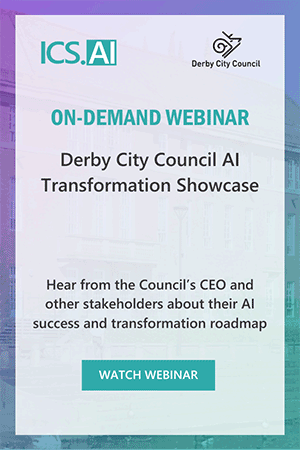AXELOS
|
|
The disruption economy: a warning to IT organizations
Blog posted by: Julie Mohr – author & international keynote speaker, 14 December 2018.

Julie L. Mohr, renowned author and international keynote speaker, shares with AXELOS her thoughts on why consumers are embracing companies such as Uber, Amazon and Netflix and why IT organizations can either learn lessons from the disruption economy, or risk extinction:
Consumers today are increasingly vocal about what they want and need from service providers – and they’re not willing to tolerate bureaucratic, lethargic and friction-filled buyer-seller relationships.
Companies that have responded disruptively to that context – Google, Facebook, Apple, Amazon, for example – mostly started out giving stuff away, or making the cost of entry low or free. In return, what they got from their customers was the creation of knowledge as a core business asset. Using knowledge-based decision making (coincidentally, an ITIL approach) enabled these companies to disrupt markets and create unique business models.
For example, Amazon selling books: it has replicated the physical experience as far as possible online and removed friction from the buying process. Ultimately this disruptor brought down competitor Borders books in the USA. Similarly-disruptive new business models supported by digital technology are evident in Uber, Netflix and iTunes.
A similar disruption challenge for IT organizations
Just as consumer markets are being disrupted, IT organizations are also primed for change because of repetitive failure to keep services up and running, lack of agility and an inability to move fast enough to support rapidly changing business demands.
And with the advent of innovative technologies – such as cloud computing and artificial intelligence – the chance that IT organizations will be disrupted as providers of internal services dramatically increases.
So, what are the essential next steps for IT to remain a relevant function?
Capturing and using knowledge
IT organizations need to increase the knowledge they capture that’s helpful from a business perspective. Their approach needs to change from “this is something we do” to “this is what we do”.
Presently, the focus on knowledge as a core asset is missing even though it’s vital for business decision making: developing disruptive models is more difficult and risky until you’ve mastered gathering this asset.
Once you’ve done that, it’s about finding ways to use information more effectively. For example, it could be pushed out through 24/7, self-service customer portals. But it has to reflect the customer’s context from the outset (think in terms of customer problems such as “the internet’s down” rather than the equivalent IT terminology of “network connectivity”. Shifting left to the customer means the organization is more likely to get the benefit of cost reduction and successful adoption.
With an understanding of the complete customer experience, knowledge can improve service restoration and root cause analysis – thus making problem management more effective. It also increases the organization’s capacity and frees up resources to concentrate more on innovation.
Deploying service management methods
From a service management viewpoint, there is a big difference between training people in the methods of IT service management and understanding what to do with those tools.
In some organizations I’ve worked with, there’s a gap between what they’re currently doing and what I recommend they should be doing.
Rather than adopting a broad approach to service management, a good starting point is to know where the organization is today. From there, it’s possible to identify where service management can be adopted to generate value. Success isn’t about over-engineering service management but instead about driving improvements in areas of business need.
You need to be able to answer: What are we doing? Why? Who are our customers? How can we serve them best? Knowing what they need leads to making better decisions with the proper tool set to make the right improvements. In turn, you need to measure how the business is delivering and then you can move on to focus on another area that needs improvement.
Supporting digital disruption
Digital disruption carries a substantial risk. So, to make better decisions we have to focus on making those decisions data-driven. There are ways to get there but the reality is that IT organizations need to change their business models, period. It’s not about just providing service end-to-end and keeping services up and running.
Organizations have to think about the knowledge they need to support decision-making that will actually help the business.
Original article link: https://www.axelos.com/news/blogs/december-2018/a-warning-to-it-organizations
| Home | Qualifications | Training | Licencing | Store | News |
Latest News from
AXELOS
PRINCE2 7 – Progress: making a good practice better still
28/11/2023 10:20:00Blog posted by: Richard Rose – Co-author, PRINCE2 7, As an independent consultant and trainer in programme, project and change management, Richard is passionate and fervent about the value of delivering value-added training, mentoring and coaching. www.richardarose.co.uk Richard is the lead trainer and author of the MSP and AgilePM® courses offered by Explosive Learning Solutions (ELS) as well as delivering PRINCE2®, MoP® and P3O® courses for ELS and other Accredited Training Organizations. www.elsbusinesstraining.co.uk, 23 November 2023.


